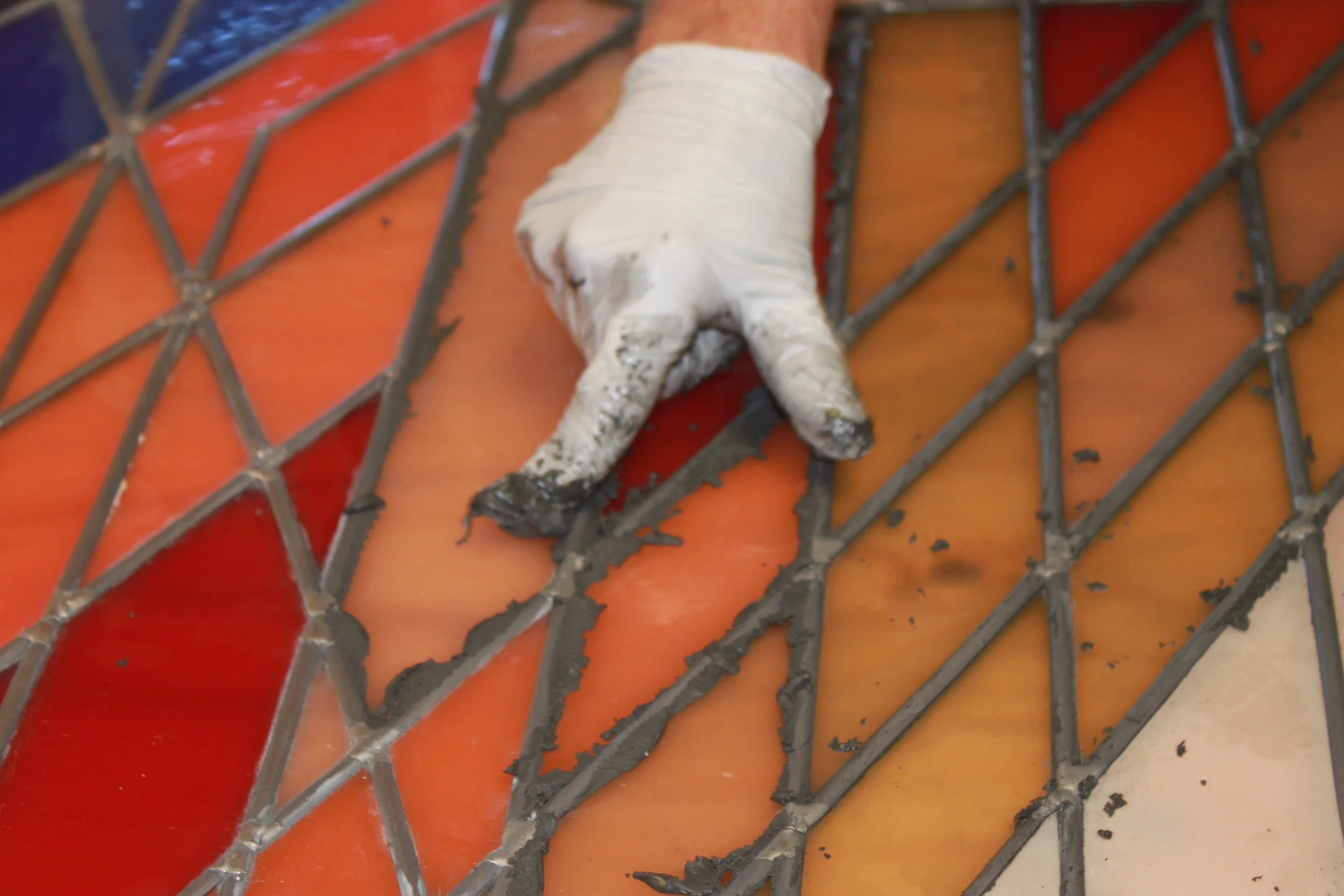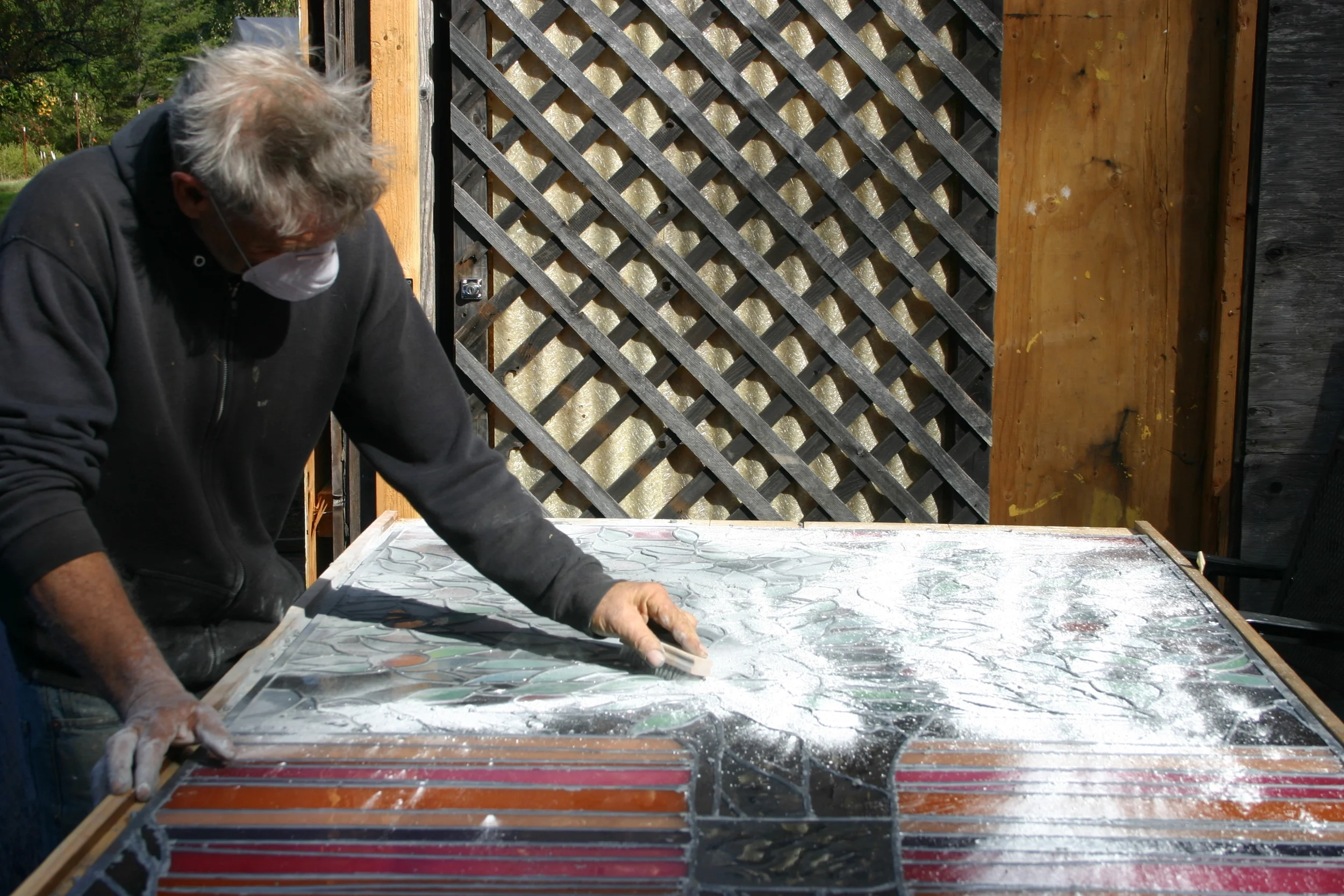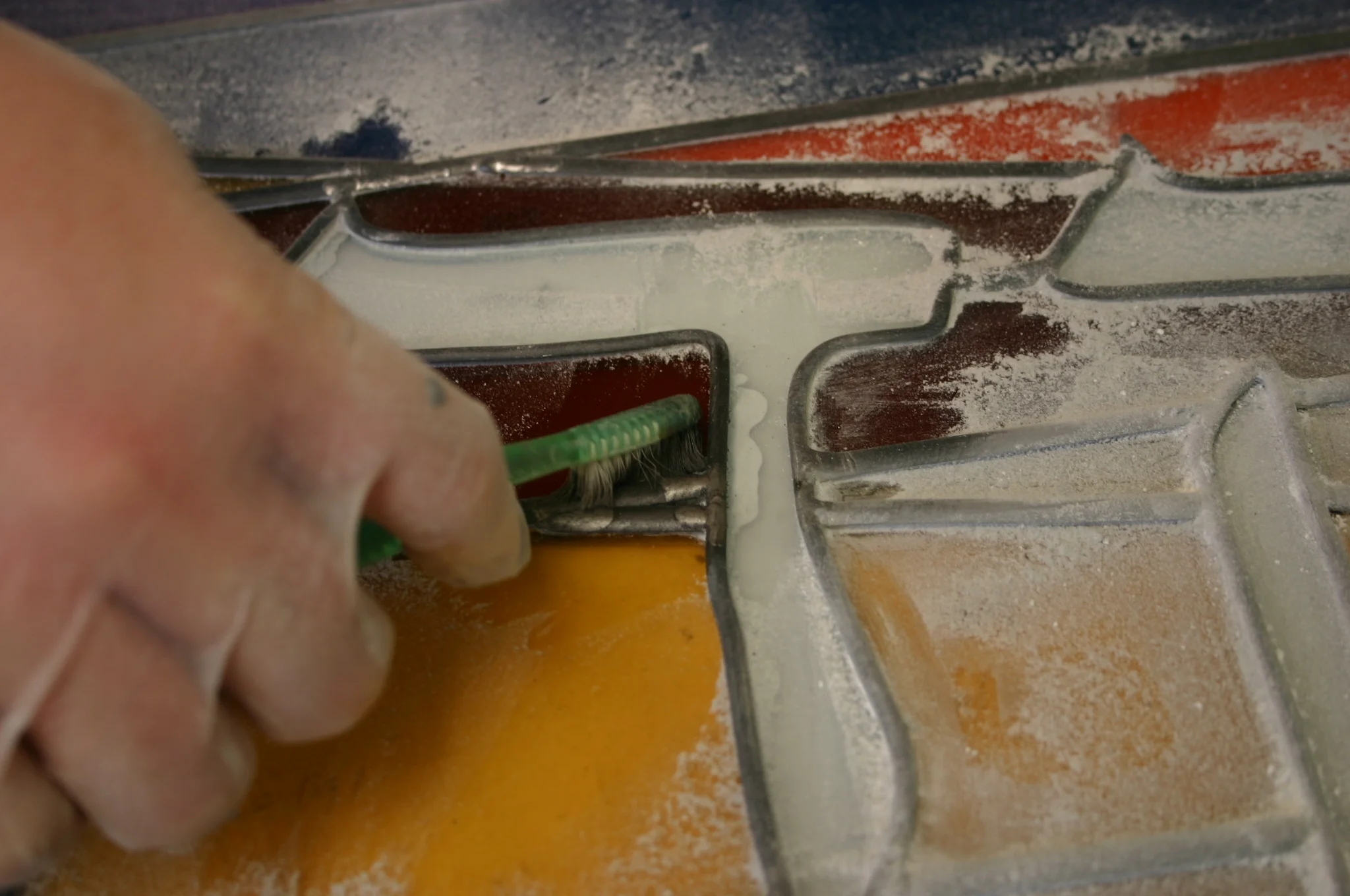





designers and fabricators of stained glass windows for synagogues
Glazing is dirty work that falls to David. Glazing is the process of pushing glazing putty into the lead channel to fill all the additional space surrounding the glass piece in the came. This is done for water-proofing and to make the window rigid. Prior to glazing, the surface of the lead is rubbed, again, with steel wool to remove any excess flux and oxidation that might interfere with achieving an even black patina. First, the putty is pushed under the channel edge. Then the excess is removed with a fid or other tool. Finally, the entire surface of the panel is scrubbed vigorously with dry plaster of Paris to remove oily residue from the putty, polish the glass and patina the lead to a deep black color. Upon completion of one side of the panel, the entire panel is flipped over and the process is repeated on the back side of the window.
Glazing is dirty work that falls to David. Glazing is the process of pushing glazing putty into the lead channel to fill all the additional space surrounding the glass piece in the came. This is done for water-proofing and to make the window rigid. Prior to glazing, the surface of the lead is rubbed, again, with steel wool to remove any excess flux and oxidation that might interfere with achieving an even black patina. First, the putty is pushed under the channel edge. Then the excess is removed with a fid or other tool. Finally, the entire surface of the panel is scrubbed vigorously with dry plaster of Paris to remove oily residue from the putty, polish the glass and patina the lead to a deep black color. Upon completion of one side of the panel, the entire panel is flipped over and the process is repeated on the back side of the window.
Pushing glazing putty under the came.
Glazing with putty for water-proofing and regidity.
Nico works on glazing a panel destined for an ark door.
Danza scrubs off the putty residue with plaster of Paris.
Cleaning up a panel with plaster of Paris.
Removing excess putty with a fid.